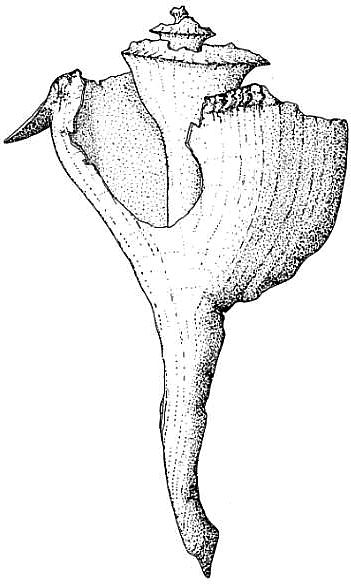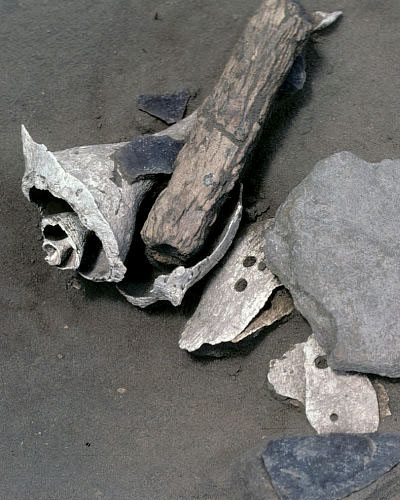



Marine conch shells, from the Busycon, or lightning whelk, were prized by prehistoric people for making ornaments, such as pendants, disc beads, and gorgets. Along the coast where there are no natural sources of stone, the strong inner columella of the shells was also fashioned into tools such as adzes, scrapers and hammers. Inland, most conch shell is found as ornaments, rather than tools. Both whole conch shells and the ornaments made from them were placed in burials during prehistoric times, although such offerings seem to have been placed with relatively few individuals, often with multiple offerings of marine shell or other rare materials. At the Loma Sandia cemetery, only 18 conch specimens were recovered and these were associated with relatively few individuals. Only 8 or fewer individuals (some associations were unclear) out of the roughly 205 human burial had grave offerings made of conch shell. Most of the individuals were adults, both females and males.
The grave offering shown above contained four shell pendants and a largely complete conch shell, as well as an antler baton (flaking tool), three Tortugas points, flakes, a hammerstone, and a grinding slab fragment. Conch shell ornaments were traded to or obtained by inland peoples living many days travel from the coast. For instance, a variety of decorated conch shell ornaments were included as grave offerings in the Late Archaic cemetery at Olmos Dam in Bexar County, near the edge of the Balcones Escarpment, some 125 miles from the coast. Drawing by Cathy Dodt-Ellis; photo, UTSA-CAR archives.